The following list highlights some of the best places to visiting in South Korea. So if you are in South Korea, I recommend visiting the following:
- Changdeokgung Palace, Seoul, South Korea
- Jeju Island, Jeju, South Korea
- N Seoul Tower, Seoul, South Korea
- The DMZ, Korean Peninsula, South Korea
- Beomeosa Temple, Busan, South Korea
- Bukchon Hanok Village, Seoul, South Korea
- Seoraksan National Park, Inje County, South Korea
- Lotte World, Seoul, South Korea
- Gyeongbokgung Palace, Seoul, South Korea
- Hallyeo Maritime National Park, Gyeongsangnam-do, South Korea
- Bulguksa Temple, Gyeongju, South Korea
- Seongsan Sunrise Peak, Jeju, South Korea
- Gwanghwamun Gate, Seoul, South Korea
- Jingwansa Temple, Seoul, South Korea
- Seoul’s Street Food Markets, Seoul, South Korea
- Dadohaehaesang National Park, Yeosu, South Korea
- Suwon Hwaseong Museum, Suwon, South Korea
- Halla Mountain, Jeju-do, South Korea
- Kyeong-Wha Station, Changwon-si, South Korea
1. Changdeokgung Palace, Seoul
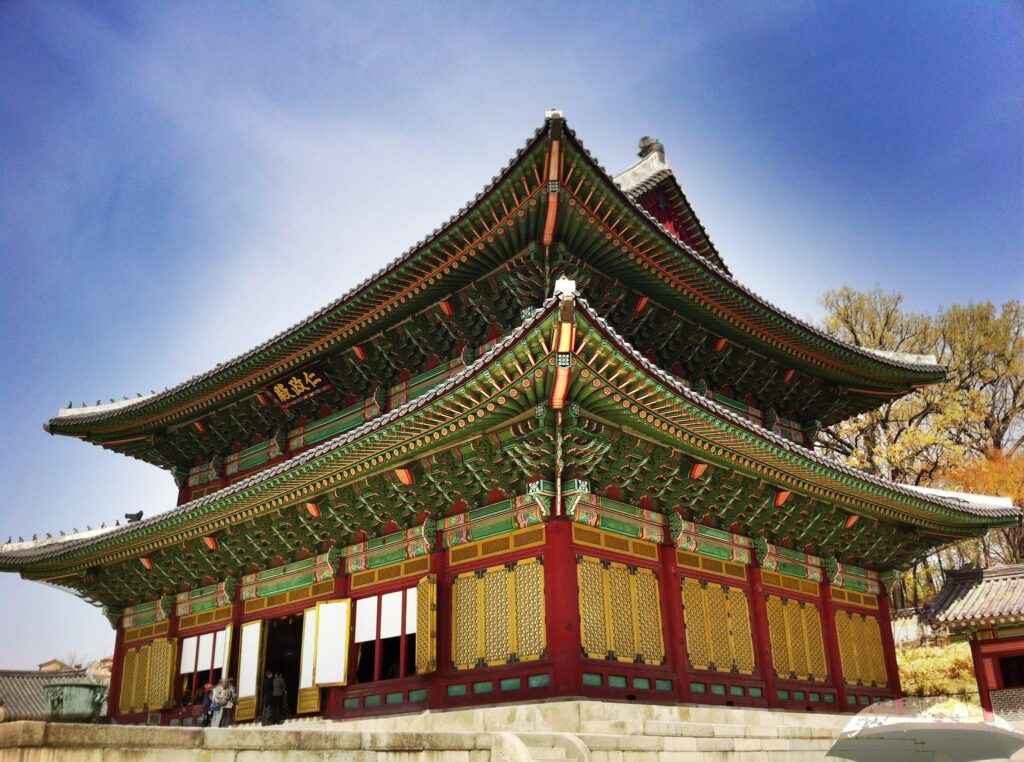
One of the five great palaces of Seoul, listed as a UNESCO World Heritage Site. For four centuries, the palace was the seat of the royal family. It is a beautiful architectural and park complex. The Houwon Palace Secret Garden is a particularly popular attraction.
2. Jeju Island, Jeju
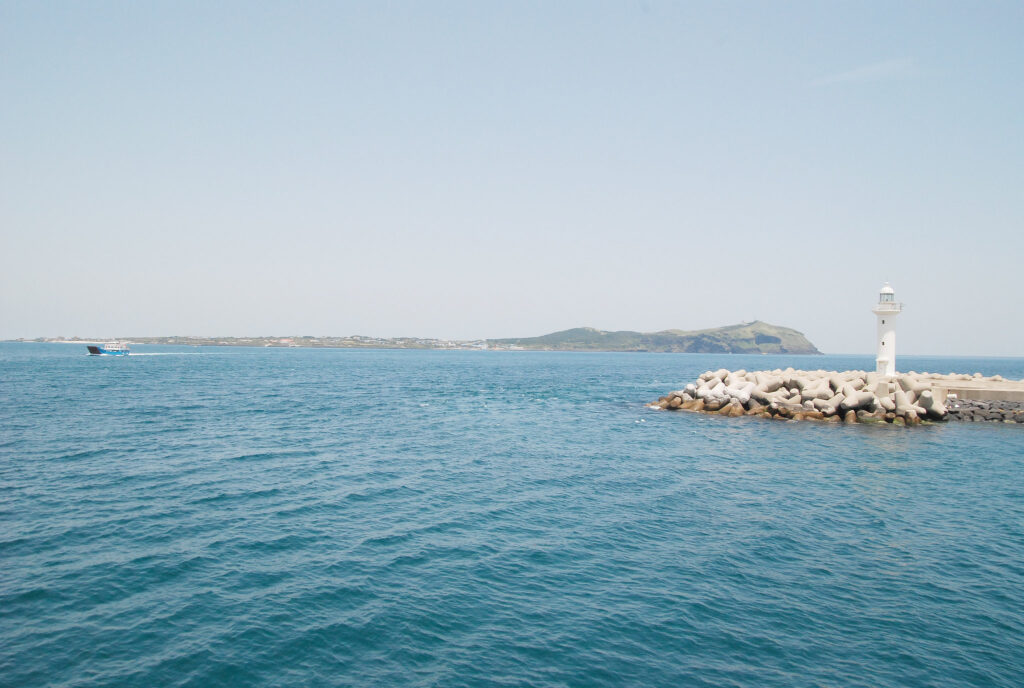
South Korea’s largest island, it is a separate province. Volcanic in origin, it has a unique landscape and nature. It has a unique microclimate: this is the southernmost part of the country, there are excellent beaches. An attractive tourist destination, very popular with honeymooners.
3. N Seoul Tower, Seoul
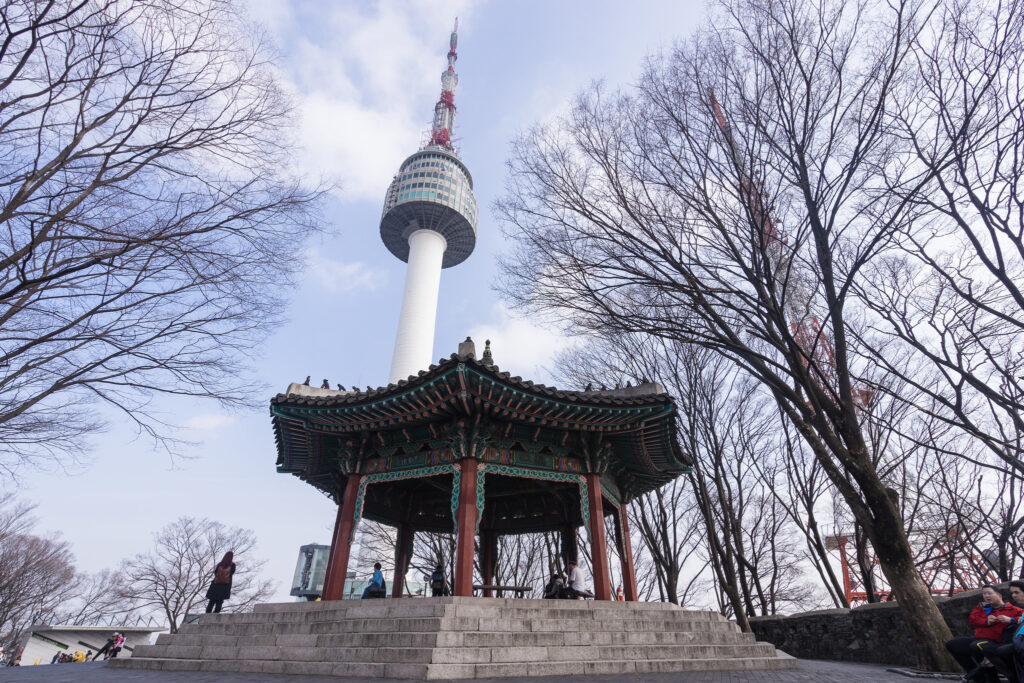
Located on Namsan Mountain in the centre of Seoul. The tallest building in the city. The symbol of modern Seoul and its number one landmark. It is an entertainment complex featuring several observation decks, restaurants, souvenir shops, an observatory, a teddy bear museum and even a wishing pond.
4. The DMZ, Korean Peninsula
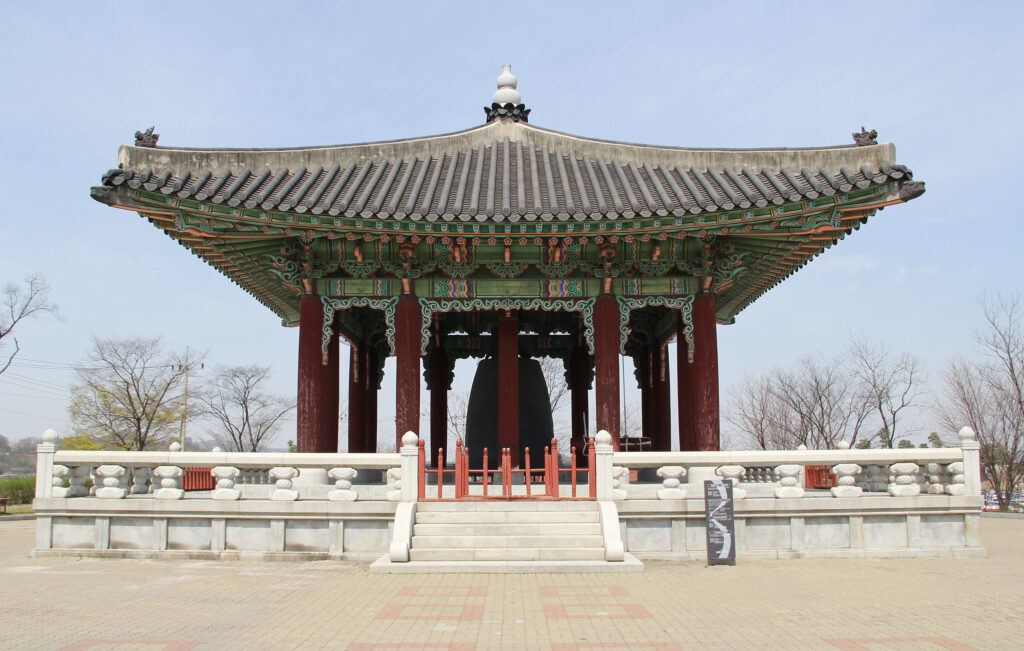
A special protected facility is the border between South and North Korea. It is a sturdy concrete wall reinforced with additional protection. A special section has been equipped for tourists, which allows them to personally study the fortification and even look through binoculars at the “northern neighbour”.
5. Beomeosa Temple, Busan
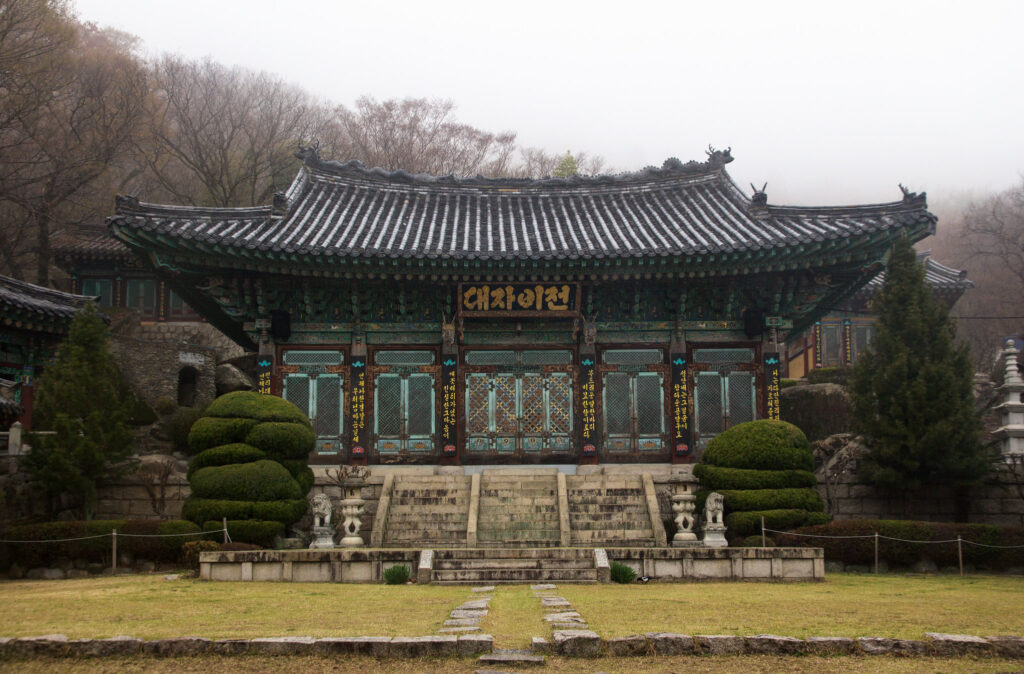
An ancient Buddhist temple, one of the largest in Korea. Located on Mount Komodzhon, near the city of Pomos. Some objects in the complex have more than a thousand years of history. On an area of 8 km² there are 160 buildings in the traditional architectural style of the Joseon dynasty.
6. Bukchon Hanok Village, Seoul
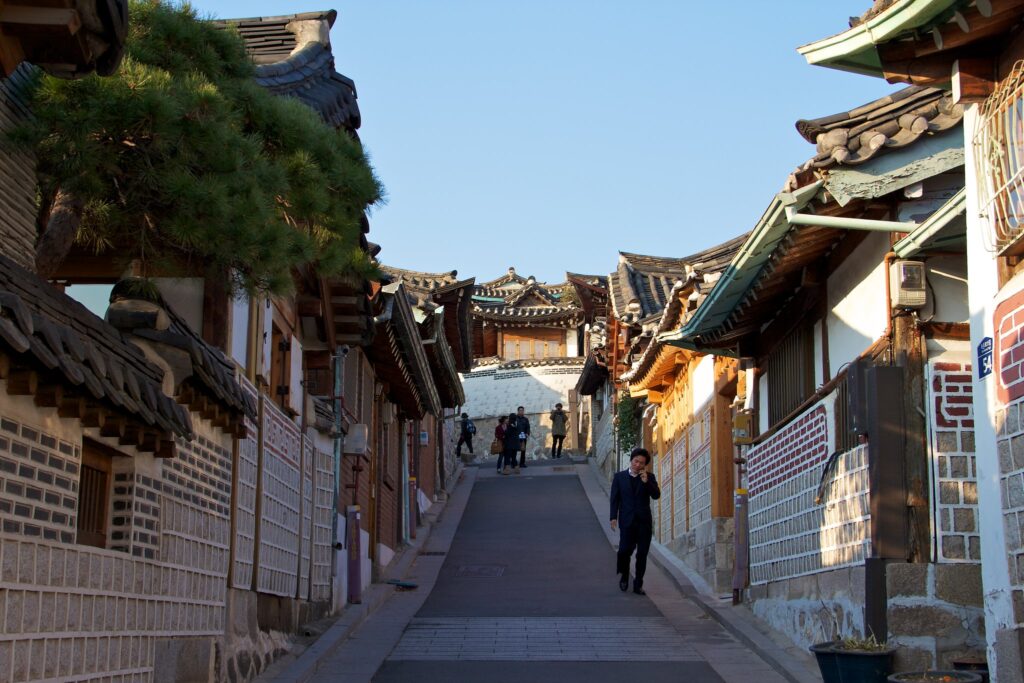
Close to some of Seoul’s palaces and Jongmyo Shrine, this neighbourhood of traditional houses and steep streets is an attraction in its own right. Bukchon was the village of the noble class in the Joseon period, the world’s longest-lived imperial dynasty. There are still many traditional upper-class houses in this village that have been preserved for centuries and retain the characteristic hanok architectural style, making Bukchon an almost unmissable place to see in South Korea.
7. Seoraksan National Park, Inje County
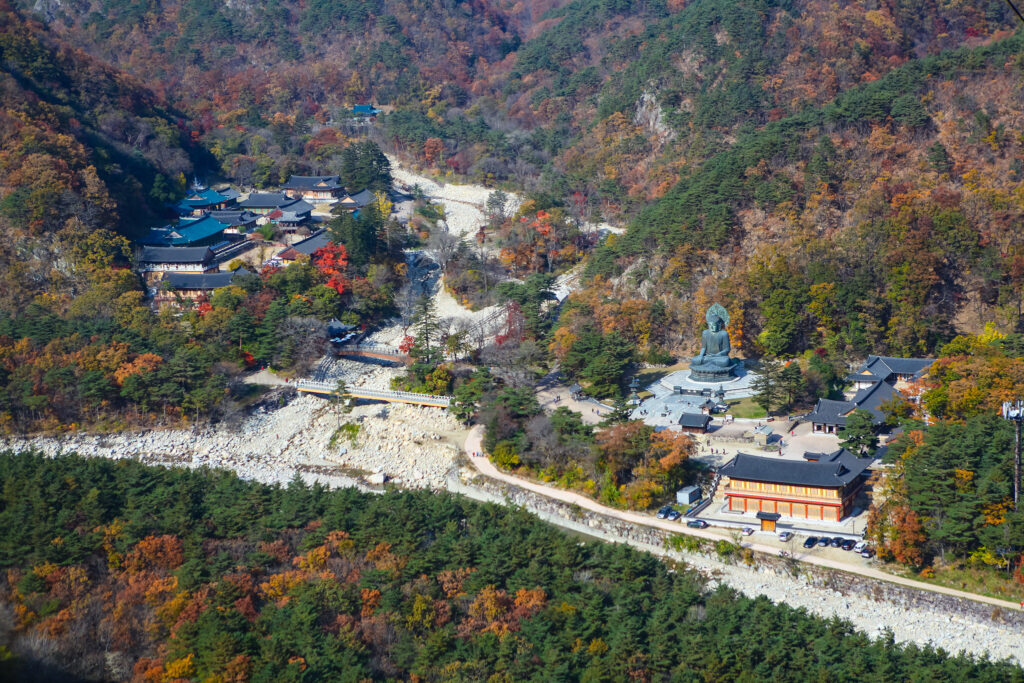
UNESCO Biosphere Reserve. Contains rocks, waterfalls, hot springs, Buddhist temples. Large in area, divided into three parts. Many organised hiking routes (trails). There are places for overnight stays, hotels and catering outlets. You can find several Buddhist temples along the way such as Sinheungsa Zen Temple, a monument to the peaceful unification of Korea. You can purchase a multi-day pass where you can learn meditation and asceticism and which also includes accommodation. There are many practices and chants that seek harmony for the soul, but to understand you, you must speak English, Japanese or Chinese!
8. Lotte World, Seoul
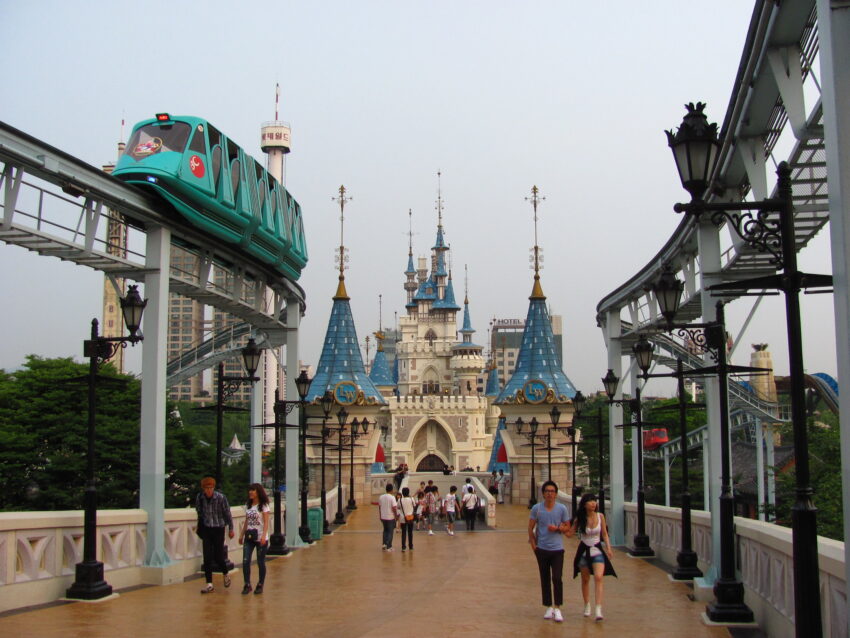
Lotte World is the largest indoor theme park in the world. In fact, with its 130,000 m² it was entered in the Guinness Book of Records. It has it all; an indoor theme park known as “Adventure”, an outdoor amusement park called “Magic Island”, an aquarium; the “Lotte World Aquarium”, a water park with outdoor and indoor attractions; the “Lotte Water Park” as well as a luxury hotel and shopping facilities. You’ll also find a huge skating rink with a restaurant, bar, sporting goods shop, skate and costume rental, and a folk museum showcasing 5,000 years of Korean cultural history.
9. Gyeongbokgung Palace, Seoul
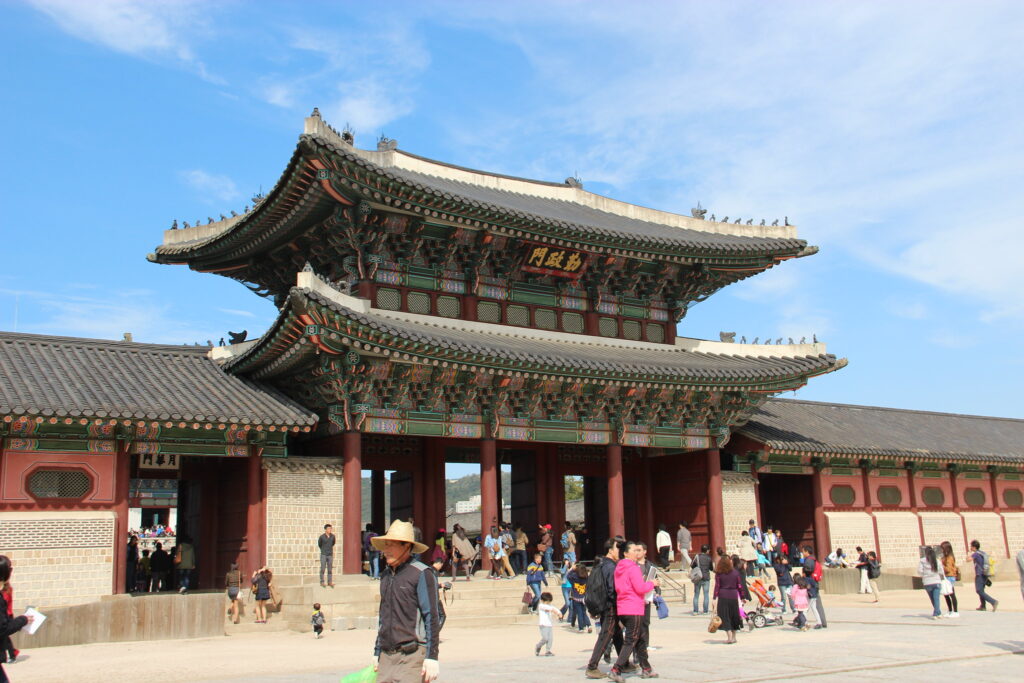
The palace complex in Seoul is an open-air museum. Built in the 14th century for the ruling royal family of the Joseon dynasty. It houses many valuable exhibits, even from the list of national treasures. The bizarre architecture and landscaping of the park is also quite interesting.
10. Hallyeo Maritime National Park, Gyeongsangnam-do

This beautiful national park includes miles of unspoiled coastline on more than 300 separate islands. Each has hiking trails with spectacular ocean and cliff views. The area also has a cable car, known as the Hallyeosudo Viewing Cable Car. It is the only dual-cable self-circulating gondola system in the country. The ride is almost 2.4 kilometres long and takes nine minutes to reach the top. You are rewarded with panoramic views of the countryside and coastline, including the Japanese island of Daemado.
11. Bulguksa Temple, Gyeongju
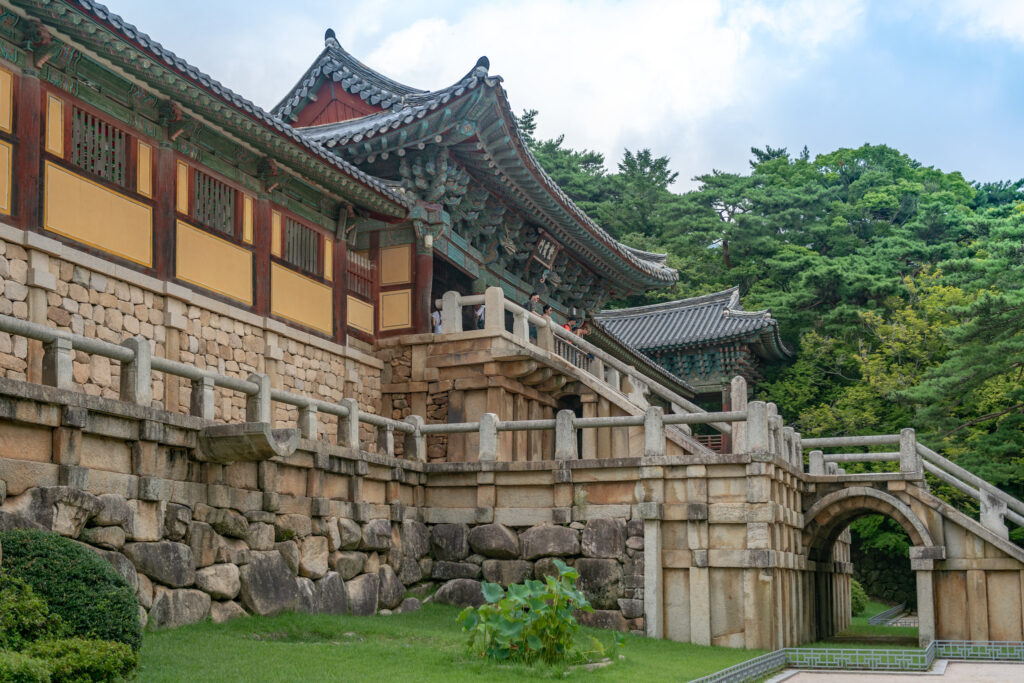
Is considered by many to be the most important in the country. It is officially the number one historical and scenic site according to the government’s ranking. The temple houses seven of the country’s national treasures, sacred pagodas and Buddha statues. It is such a historic city that it is called a “museum without walls” because of all the historic sites and temples.
12. Seongsan Sunrise Peak, Jeju

This is undoubtedly one of the most beautiful natural sites on Jeju Island. With its crown-shaped peak, this hike tends to be very crowded to the point that in high season, you should call ahead to see what the crowds are like. Also known as “the peak of dawn”, Seongsan Ilchulbong was formed some 5,000 years ago after an erupting volcano deformed its peak, leaving it as it is today.
13. Gwanghwamun Gate, Seoul
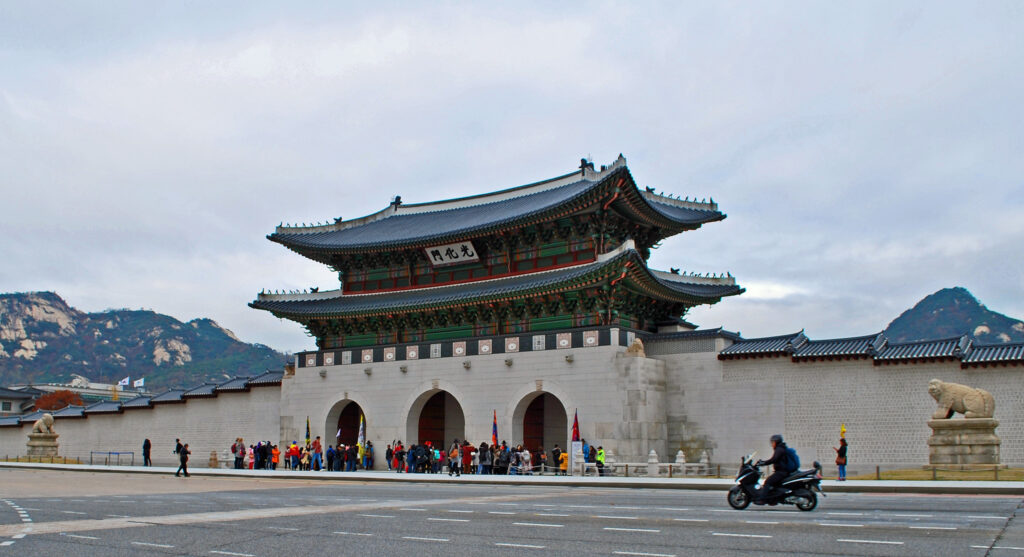
Considered the most important royal palace in South Korea, Gyeongbokgung Palace is one of the must-see sights in the city of Seoul. Its long history, together with the beauty of its buildings, make Gyeongbokgung Palace a unique place in the country. Gwanghwamun is the Main Gate (south gate) of the compound. With its great wall, the Gwanghwamun Gate is one of the biggest tourist attractions of the complex and one of the most photographed corners.
14. Jingwansa Temple, Seoul
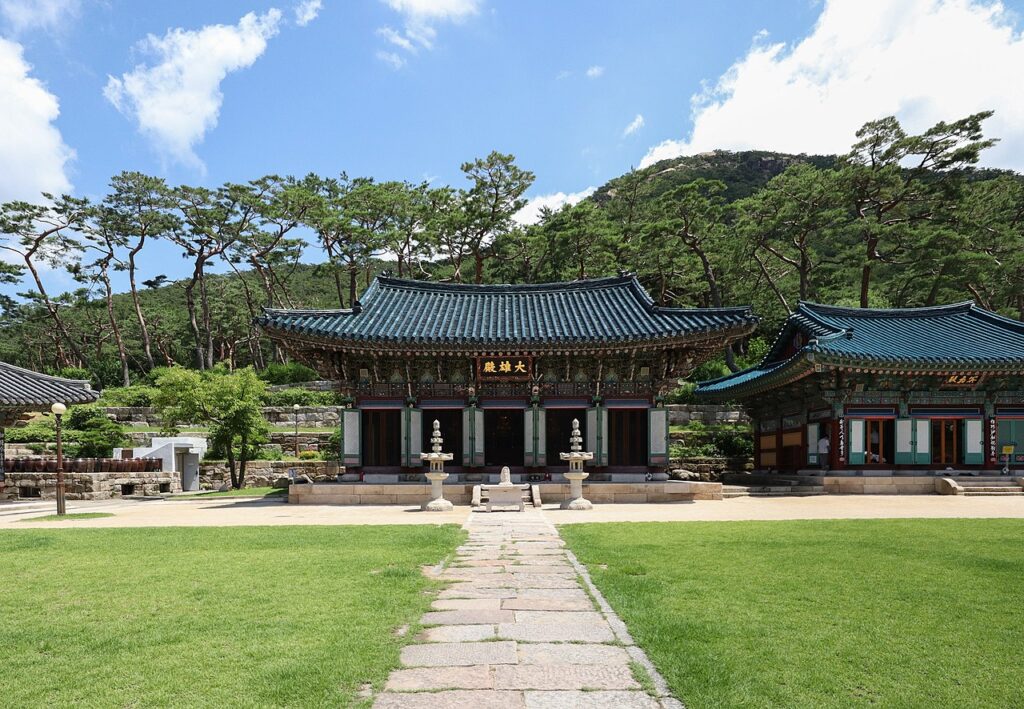
First built in the 11th century, Jingwansa Temple is one of the four main temples found in Seoul. It is famous for being a centre of education and contains an impressive library built to educate Confucian scholars. Unfortunately, the temple was burned down during the Korean War, but has since been restored to its former glory. The temple still maintains a dedication to higher education. It is now a training facility for nuns and offers temple stay programmes for visitors curious about monastic life.
15. Seoul’s Street Food Markets, Seoul
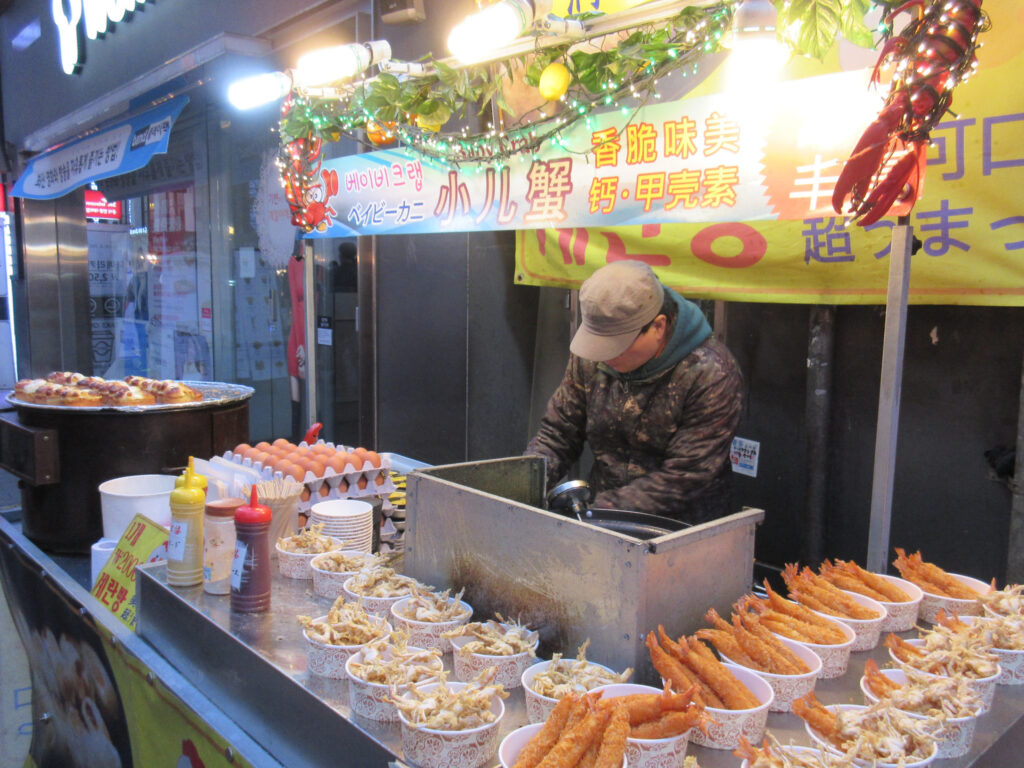
Tasting street food in Korea is one of the most typical things to do, as this activity is not only an introduction to Korean cuisine, but also to Korean culture. Koreans have a great habit of eating out, and it doesn’t always involve eating in a family or fancy restaurant, but something simple to eat alone or share, even on the street. The Gwangjang Market, famous for offering authentic delicacies and the most traditional flavours of Seoul’s street food in its many food stalls.
16. Dadohaehaesang National Park, Yeosu
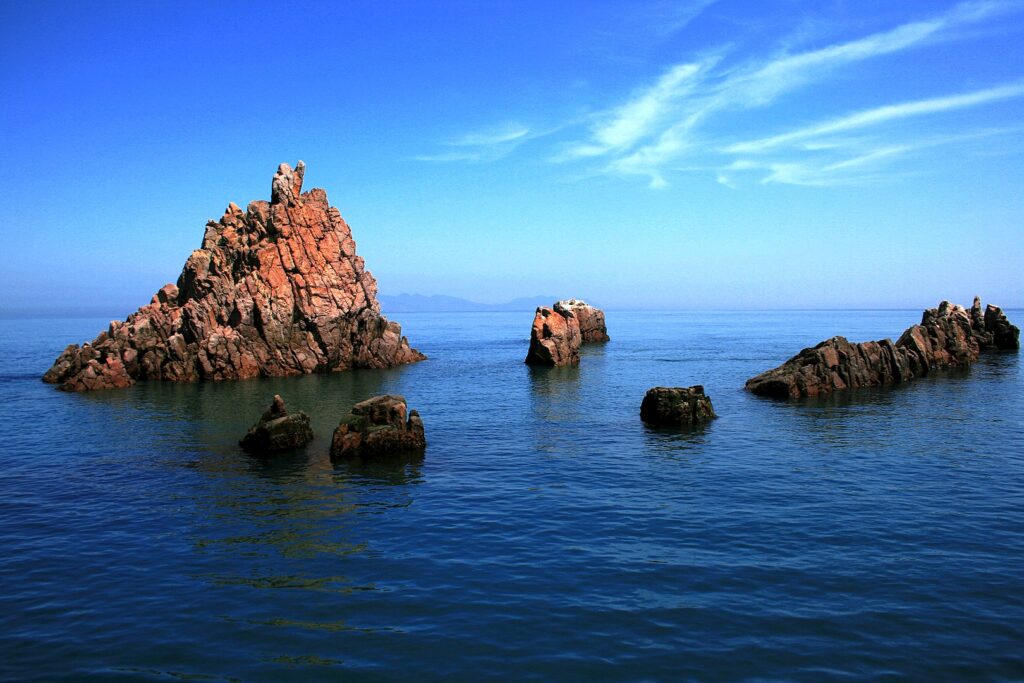
South Korea’s largest national park is located in the beautiful Jeollanam-do province in the southwest of the country. While it is the largest in terms of size, it is also one of the country’s four marine and coastal national parks. The three islands of Hongdo, Heuksando and Baekdo are the main attractions. Visitors can see more than 1,500 species of plants, more than 140 different types of birds and more than 150 seawater fish.
17. Suwon Hwaseong Museum, Suwon
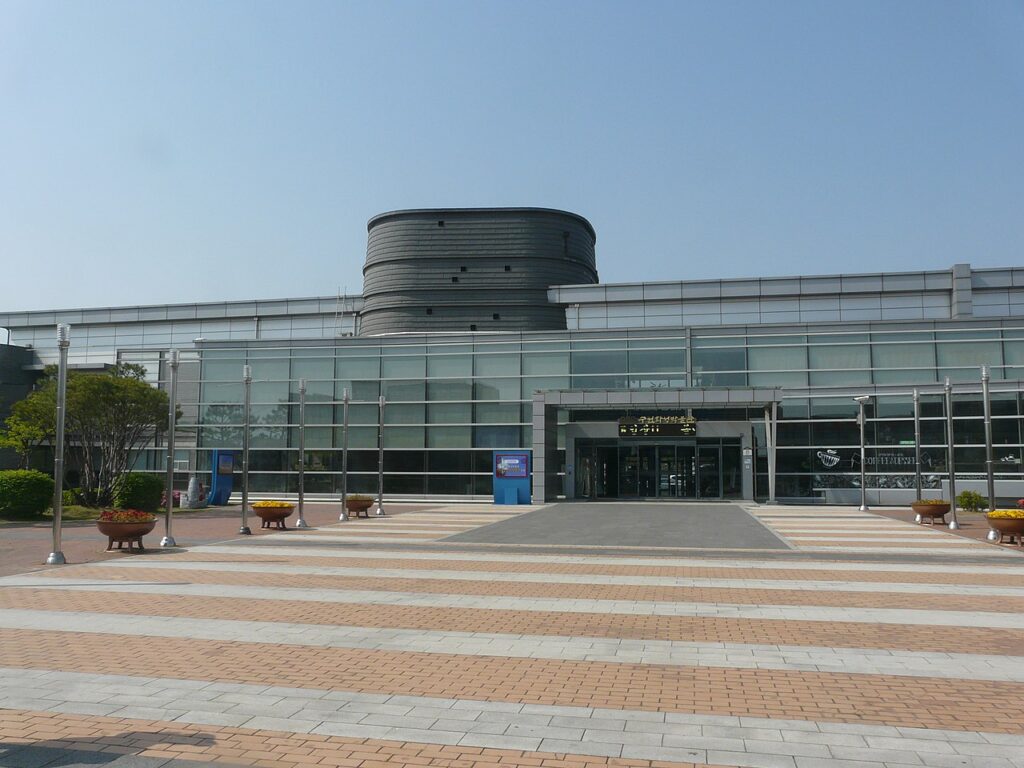
This museum tells you everything you need to know about Hwaseong Fortress. Models, maps, original architectural plans and contemporary letters are on display to explain how this massive fortress was built, as well as how it was managed and the daily rituals that would take place within these walls. In the document Hwaseong Seongyeok Uigwe (1801), you will learn how meticulous the plans were and how even the smallest details survive, down to the personal details of its construction workers.
18. Halla Mountain, Jeju-do
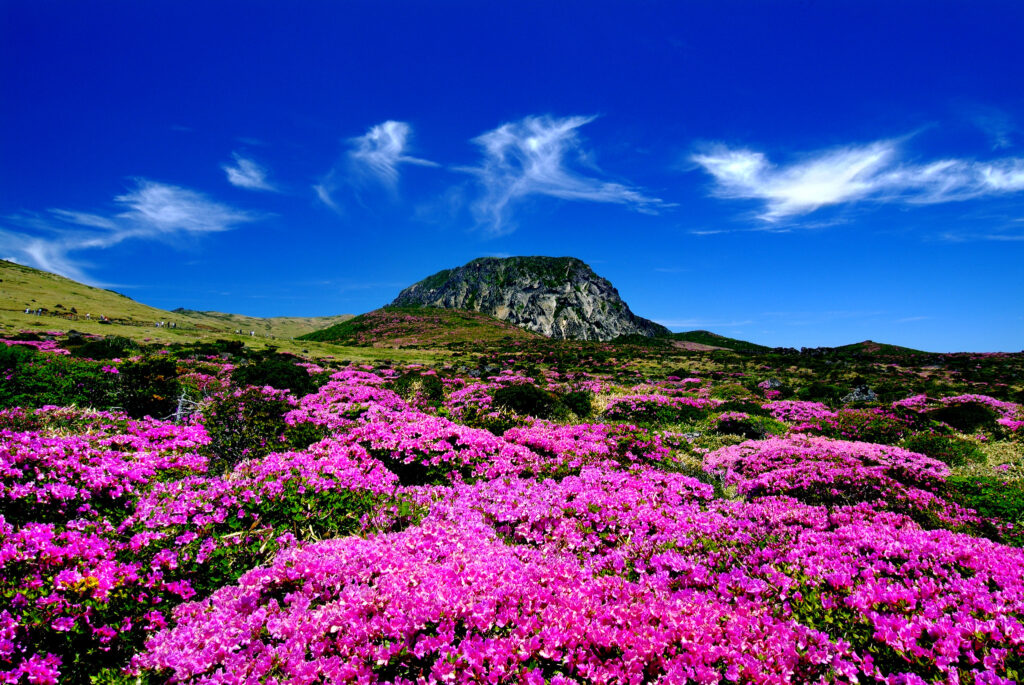
If you love nature and hiking, definitely plan to spend some time in Hallasan National Park. This is a great place for a hike, although the hours of entry to the mountain vary seasonally and are restricted to daylight hours only. Hallasan Mountain is located on Jeju Island and is also known as Mt. Yeongjusan, which means “mountain high enough to sweep the galaxy”. The hike up the mountain is fairly easy, and it is possible to complete the trip up and down in one day, provided you are prepared for wind and weather changes.
19. Kyeong-Wha Station, Changwon-si
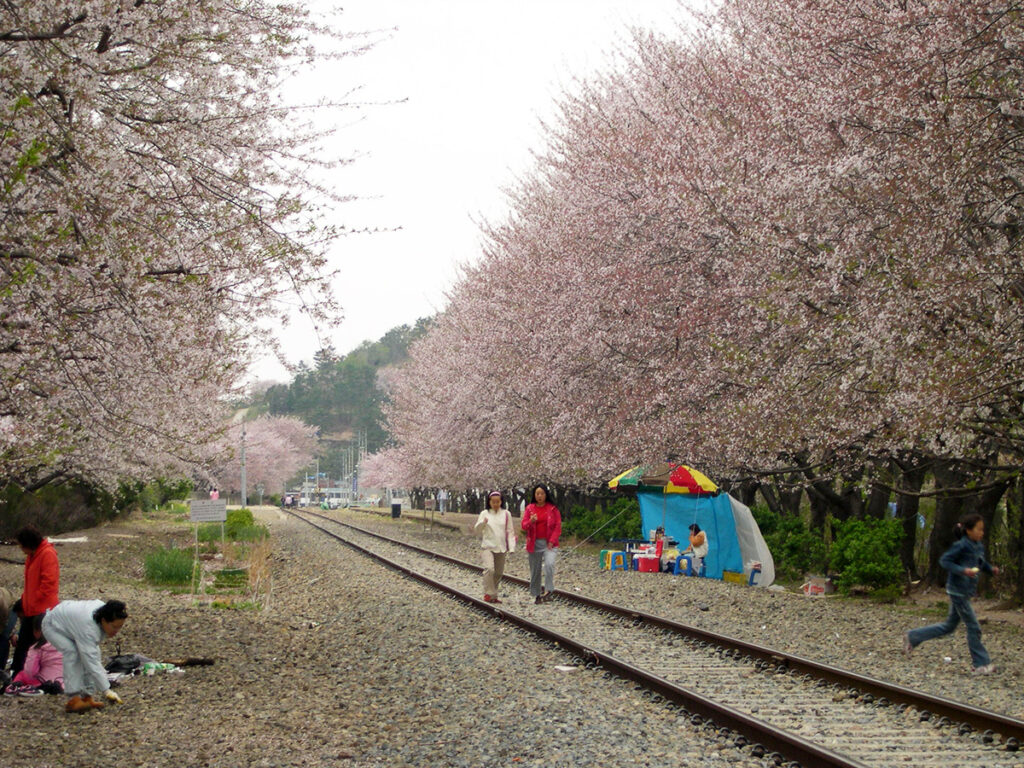
Gyeonghwa Station, famous for its beautiful cherry blossoms in spring, is a small railway station in Jinhae district. Rail service to and from Gyeonghwa Station has not been available since 2006, but visitors can walk along cherry tree-lined tracks that form a tunnel of blossoms. Every year during the Jinhae County Festival, the “Sakura Festival Shuttle Train” will run, and tourists can enjoy the beautiful blossoms on the low-speed train.
If you loved this article or found it useful, don’t forget to visit and subscribe to my social media for more useful content. Follow us on Google My Business, YouTube, Instagram, Pinterest, Twitter, Facebook or Reddit and subscribe to our receive our free website content.

